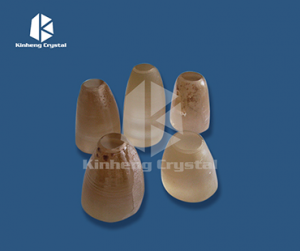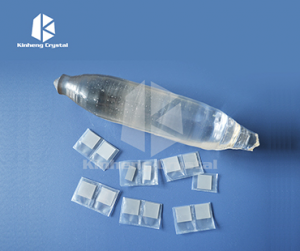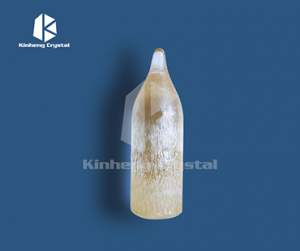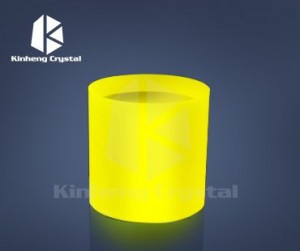CaF2 Substrate
Description
CaF2 optical crystal has excellent IR performance, which has strangth mechanics and Non-hygroscopic, It's widely used for optical window.
Properties
| Density(g/cm3) |
3.18 |
| Melt point(℃) |
1360 |
| Index of Refraction |
1.39908 at 5mm |
| Wavelengths |
0.13~11.3mm |
| Hardness |
158.3(100) |
| Flexible Coefficient |
C11=164、C12=53、C44=33.7 |
| Thermal Expansion |
18.85×10-6∕℃ |
| Crystal Orientation |
<100>、<001>、<111>±0.5º |
| Size(mm) |
Customized service available upon request |
CaF2 Substrate Definition
The CaF2 substrate refers to a substrate material composed of calcium fluoride (CaF2) crystals. It is a transparent material with excellent optical properties, such as high transmittance in the ultraviolet (UV) and infrared (IR) regions. CaF2 substrates are commonly used in a variety of applications, including optical, spectroscopic, fluorescent, and laser systems. They provide a stable and inert platform for thin film growth, coating deposition, and optical device fabrication. The high transparency and low refractive index of CaF2 make it suitable for use in high-precision optical components such as lenses, windows, prisms, and beam splitters. In addition, CaF2 substrates have good thermal and mechanical stability, making them ideal for harsh environments and high-power laser systems. Another advantage of the CaF2 substrate is its low refractive index. The low index of refraction helps minimize reflection losses and unwanted optical effects, thereby enhancing the optical performance and signal-to-noise ratio of optics and systems.
The CaF2 substrate also has good thermal and mechanical stability. They can withstand high temperatures and exhibit excellent thermal shock resistance. These properties make CaF2 substrates suitable for use in demanding environments, such as high power laser systems, where heat dissipation and durability are critical.
The chemical inertness of CaF2 also gives it an advantage. It is resistant to a wide range of chemicals and acids, easy to handle and compatible with a variety of materials and manufacturing processes.
Overall, the combination of excellent optical properties, thermal/mechanical stability, and chemical inertness make CaF2 substrates ideal for applications requiring high-quality optics and reliability.












